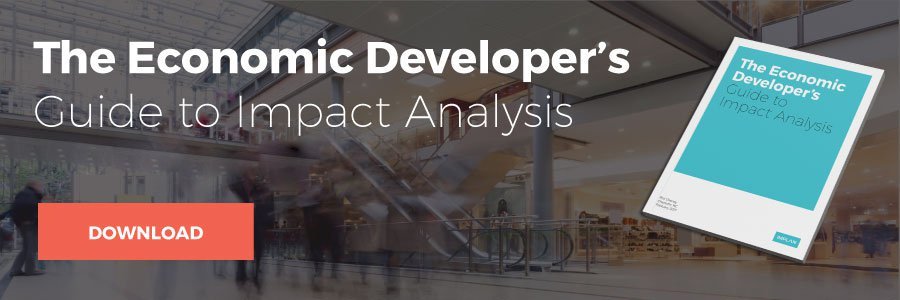IMPLAN is a platform that combines a set of extensive databases, economic factors, multipliers, and demographic statistics with a highly refined, customizable modeling system. The foundation upon which economic impact analyses are built is the input-output (I-O) model. Understanding I-O analysis and the assumptions they employ are crucial to properly performing and reporting your own analysis.
What is Input-Output Analysis?
Input-output (I-O) analysis is a means of examining inter-industry relationships within an economy. It captures all monetary market transactions between industries in a given time period. The resulting mathematical formulae allow for examinations of the effects of a change in one or several economic activities on an entire economy (impact analysis).
IMPLAN expands upon the traditional I-O approach to also include transactions between industries and institutions and between institutions themselves, thereby capturing all monetary market transactions in a given time period. IMPLAN can more accurately be described as a Social Account Matrix (SAM) model, though the terms I-O and SAM are often used interchangeably.
What Does I-O Analysis Assume?
Modeling using an I-O approach there are several assumptions that are built into the model. They include:
Constant Returns to Scale
This means that the same quantity of inputs is needed per unit of output, regardless of the level of production. In other words, if output increases by 10%, input requirements will also increase by 10%.
No Supply Constraints
I-O assumes there are no restrictions to raw materials and employment and assumes there is enough to produce an unlimited amount of product. It is up to the user to decide whether this is a reasonable assumption for their study area and analysis, especially when dealing with large-scale impacts.
Fixed Input Structure
This structure assumes that changes in the economy will affect the industry's output level but not the mix of commodities and services it requires to produce that output. In other words, there is no input substitution in response to a change in output.
Industry Technology Assumption
The industry technology assumption is used to convert make-use tables (or supply-use tables for some international datasets) into a symmetric input-output table. It assumes that an industry uses the same technology to produce each of its products. In other words, an industry's production function is a weighted average of the inputs required for the production of the primary product and each of the by-products, weighted by the output of each of the products.
Constant Make Matrix
As a requirement of the industry technology assumption, industry by-product coefficients are constant. An industry will always produce the same mix of commodities regardless of the level of production. In other words, an industry will not increase the output of one product without proportionately increasing the output of all its other products.
Static Model
No price changes are built in. The underlying data and relationships are not affected by impact runs. The relationships for a given year do not change unless another data year is selected.
The Takeaway
No economic model can account for all changes or predict the future with complete accuracy, however I-O modeling with IMPLAN ensures the most complete dataset available is employed to quantify economic impacts. Comprehending the full limitations and capabilities allows for the utmost confidence in your modeling.



.png?width=80&name=IMPLAN_Logo_Print-Vector_NEW%20(2).png) Copyright 2025
Copyright 2025